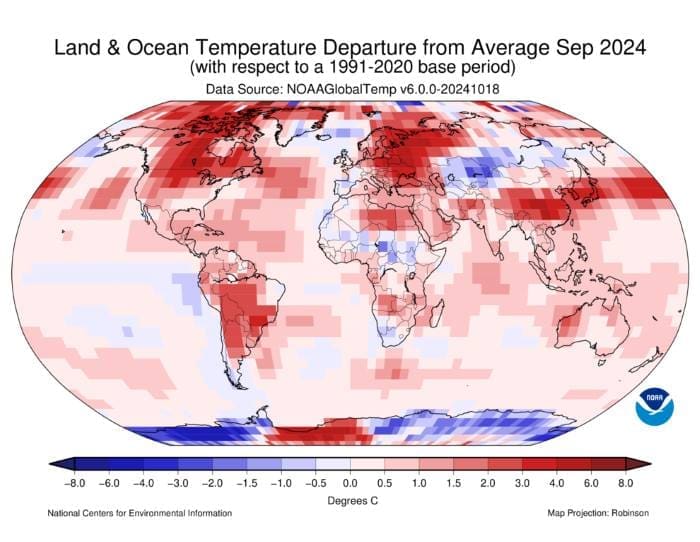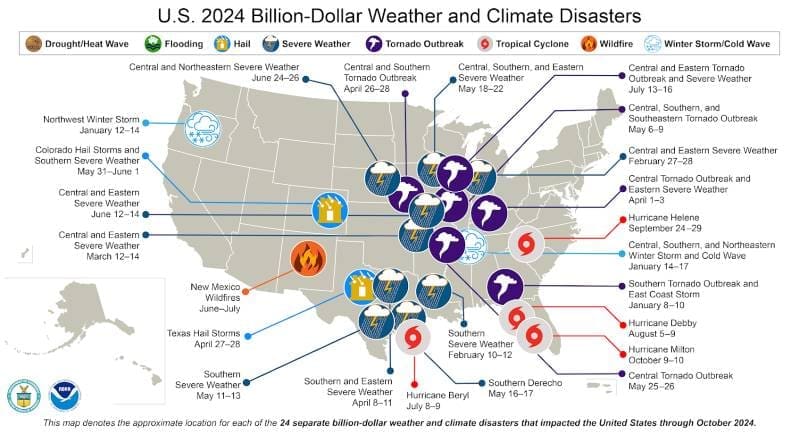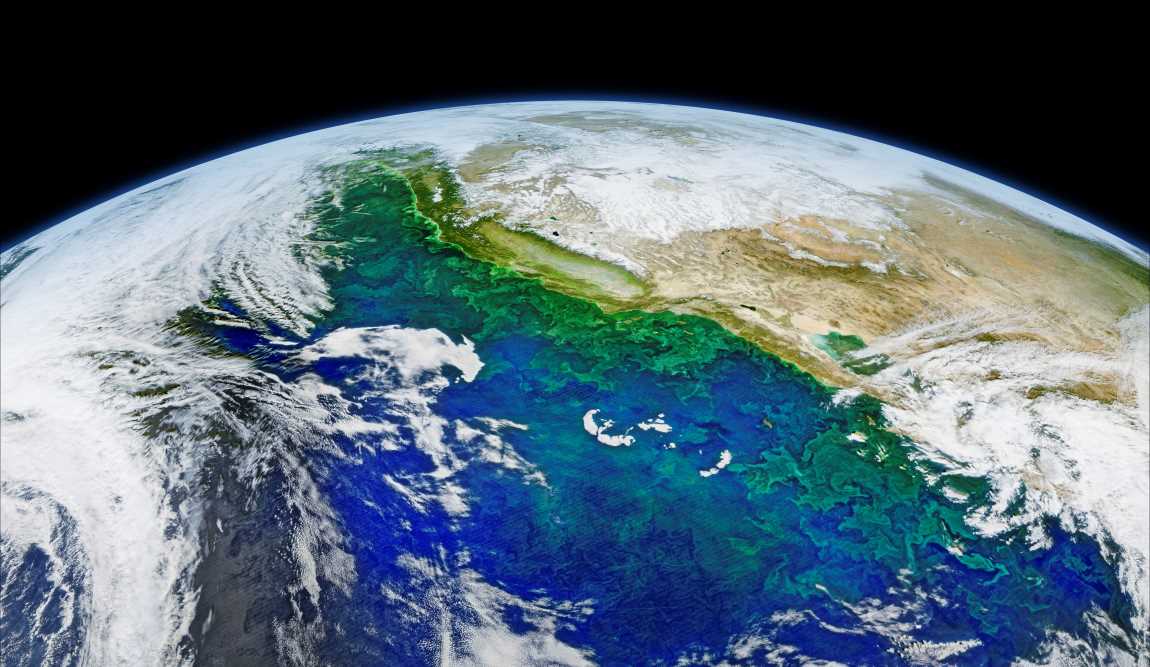September 2024 marked a significant milestone in global climate patterns, becoming the second warmest September on record both in the U.S. and worldwide.
It also brought severe weather events, most notably Hurricane Helene, which caused catastrophic destruction across the Southeast U.S., making it one of the deadliest Atlantic hurricanes since Maria in 2017. Helene’s impact led to the tragic loss of at least 200 lives and widespread power outages, with its economic toll yet to be fully assessed.

Record-breaking heat and cooler trends
While the global average temperature was lower than in September 2023, breaking a 15-month streak of record warmth, the year-to-date global temperature remained the warmest ever recorded. This period was particularly extreme for regions like North America, South America, Europe, and Africa, each of which ranked first in terms of year-to-date temperatures.
The contiguous U.S. experienced its second warmest September since records began in 1895, with an average temperature of 68.6°F (3.8°F above the 20th-century average). Several regions, including the northern Plains, Upper Midwest, and south Florida, experienced record warmth. In states such as Arizona, Wyoming, and the Dakotas, September 2024 went down as the warmest on record.
Globally, the surface temperature was 2.23°F (1.24°C) above the 20th-century average, marking the second highest on record for September, only slightly cooler than in 2023. According to the National Centers for Environmental Information (NCEI), there is a 99.8% chance that 2024 will rank as the warmest year on record.
Hurricane Helene: a devastating force
Hurricane Helene, the strongest hurricane ever to hit Florida’s Big Bend region, had devastating consequences. Classified as the deadliest hurricane to strike the U.S. mainland since Katrina in 2005, Helene’s high winds and torrential rainfall led to catastrophic flash flooding, power outages, and infrastructure damage, particularly in the Southeast U.S. The hurricane caused severe disruptions in the operations of NOAA’s NCEI headquarters in Asheville, North Carolina, delaying the release of critical climate data.

Along with Helene, the Atlantic hurricane season saw the formation of two additional hurricanes – Debby and Milton – and a tornado outbreak. These events added to the already extensive list of climate disasters, bringing the total number of billion-dollar weather and climate disasters for 2024 to 24, the second-highest ever recorded by mid-October.
Polar ice and precipitation anomalies
September 2024 also saw significant developments in polar ice cover. The Arctic sea ice extent was recorded as the sixth smallest in the 46-year satellite record, covering just 1.69 million square miles. In Antarctica, sea ice extent shrank to 6.59 million square miles, the second lowest on record. These shifts in polar ice cover reflect broader changes in the Earth’s climate system, with long-term consequences for global weather patterns.
Snow cover extent also varied significantly, with North America reporting a below-average snow cover of 320,000 square miles, while Eurasia experienced a slight increase, with 90,000 square miles above the average. These fluctuations in snow cover can influence regional climates and are critical indicators of climate change.
Precipitation levels for September were near the long-term global average, but certain regions saw extreme deviations. Notably, the Sahara desert experienced its wettest September on record due to the unusual passage of an extratropical cyclone on September 7-8, an event that is extremely rare for this arid region.
A continuing trend of billion-dollar disasters
Since 1980, the U.S. has endured 400 weather and climate disasters where damages exceeded $1 billion, with total costs surpassing $2.785 trillion. This year alone, the U.S. has seen 24 billion-dollar disasters by mid-October, a figure second only to the 27 events recorded by this time in 2023. These events underscore the growing frequency and intensity of extreme weather phenomena, linked to the broader impacts of global climate change.
The year-to-date climate disaster toll reflects an increasingly volatile climate. While cost estimates for Helene and Milton have yet to be finalized, the cumulative impact of 2024’s disasters is expected to rival or exceed previous years, making it a significant chapter in the ongoing narrative of climate-related destruction.

September 2024 stands out not only for its record-breaking temperatures but also for the devastating impacts of extreme weather events. The deadly Hurricane Helene, combined with a string of other climate disasters, has highlighted the increasing risks posed by a warming climate. As we move into the final months of the year, it is clear that 2024 is on track to be the warmest year on record, bringing with it a stark reminder of the urgency of addressing the global climate crisis.
Source: NOAA National Centers for Environmental Information
Featured image credit: rawpixel.com | Freepik




